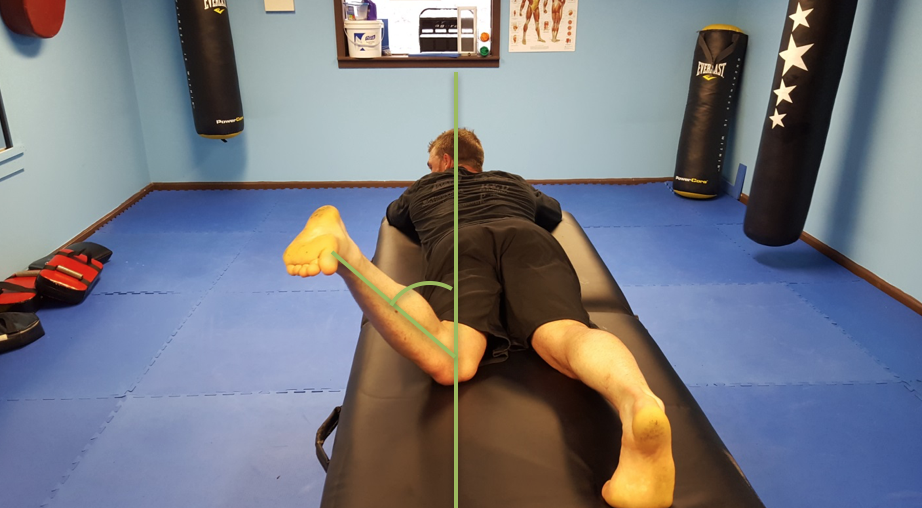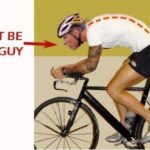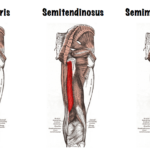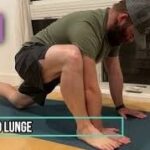Full range of motion is an integral factor in optimal performance. Studies have shown that performing exercises with full ROM is more beneficial for long term strength than performing the same exercises with a shortened ROM. Increased passive flexibility in joints has also been shown to delay the onset of arthritis, as well as reduce symptoms.
Each muscle group works in tandem to produce joint movements. You have the agonist (performer of an action), antagonist (opposite muscle group, and stabilizer muscles) they stabilize the joint while it’s moving). Imagine your running stride; your leg moves forward, your foot hits the ground, and you use that foot to launch your body forward. The first joint movement in this action is called hip flexion. Your hip flexors (the agonists) will lift your thigh forward and up, so that you can plant your foot forward. If the antagonist group (the hamstrings) has a pathologically shortened ROM, your hip flexors will not be strong enough to overpower them, and you will have a short stride. In order to prevent this, you will need to check your hamstring ROM and treat them accordingly. You can apply this thinking to any movement or exercise; your bench press, squat, deadlift, running, jumping, and throwing. There is always an agonist, and antagonist. Each group will need to utilize full ROM in order to perform optimally.
Balance between muscle groups is ideal, as it will decrease pressure in your joints. Each joint is surrounded by soft tissue. This can be muscle tissue, fascia, tendons and ligaments. If this tissue is tight, it will pull the joint into itself and, eventually, wear down the cartilage and synovial fluid. Over time, this can cause two bones to grind, which can lead to arthritis. Keeping this surrounding tissue loose and soft will help prolong the health of your joints.
Each joint has a normal, ideal range of motion. Anything less than this normal range is termed “hypomobility” and will eventually cause some problems. Anything significantly higher than this normal range is termed “hypermobility” and will also, eventually, cause some problems. You’ll want to regularly test your ROM and keep each joint near this ideal range. If you have some hypomobility in a certain movement, you will want to soften and loosen the antagonist group. If there is hypermobility in a movement, then you will want to strengthen and tighten the antagonist muscle group. Again, we just want a healthy balance between the groups.
Below is a somewhat comprehensive list of some main joints and movements. You will see what the ideal ROM is, as well as the antagonist and agonist for each movement. You can use this information as a comparison to your own ROM. Have a friend take a picture of you. You can then draw a line with a protractor and see how you match up!
Normal ROM (in degrees)
Hip and Leg
Hip
1. Flexion 0-125
Agonists: Hip flexor group – Iliopsoas, TFL, Rectus Femoris, Pectineus, Sartorius.
Antagonists: Hamstrings, Gluteus Medius, Gluteus Maximus.

2. Extension 0-30
Agonists: Hamstrings, Gluteus Medius, Gluteus Maximus.
Antagonists: Hip Flexor Group – Iliopsoas, TFL, Rectus Femoris, Pectineus, Sartorius.

3. Adduction 45-0
Agonists: Adductor group – Pectineus, Adductor Brevis, Adductor Longus, Gracilis, Adductor Magnus.
Antagonists: Gluteus Minimus, Gluteus Maximus, Gluteus Medius, TFL.

4. Abduction 0-45
Agonists: Gluteus Minimus, Gluteus Maximus, Gluteus Medius, TFL.
Antagonists: Adductor group – Pectineus, Adductor Brevis, Adductor Longus, Gracilis, Adductor Magnus.

5. Medial (internal) rotation 0-45
Agonists: Adductor group, TFL.
Antagonists: Lateral rotator group – Piriformis, Gemellus Superior And Inferior, Obturator Internus And Externus, Quadratus Femoris. Iliopsoas.

6. Lateral (external) rotation 0-45
Agonists: Lateral rotator group – Piriformis, Gemellus Superior And Inferior, Obturator Internus And Externus, Quadratus Femoris. Iliopsoas.
Antagonists: Adductor group, TFL.

Knee
1. Flexion 0-130
Agonists: Hamstrings, Gastrocnemius.
Antagonists: Quads.

2. Extension 0
Agonists: Quads
Antagonists: Hamstrings, Gastrocnemius.

Ankle
1. Plantar flexion 0-50
Agonists: Gastrocnemius, Soleus.
Antagonists: Tibialis Anterior.

2. Dorsiflexion 0-20
Agonist: Tibialis Anterior.
Antagonists: Gastrocnemius, Soleus.

3. Inversion (supination) 0-35
Agonists: Tibialis Anterior, Tibialis Posterior.
Antagonists: Peroneus Longus, Peroneus Brevis, Peroneus Tertius.

4. Eversion (pronation) 0-25
Agonists: Peroneus Longus, Peroneus Brevis, Peroneus Tertius.
Antagonists: Tibialis Anterior, Tibialis Posterior.

Shoulder and Arm
Shoulder
1. Flexion 0-90
Agonists: Anterior Deltoid, Clavicular Head Of Pectoralis Major, Long Head Of Biceps.
Antagonists: Latissimus Dorsi, Teres Major, Posterior Deltoid, Long Head Of Triceps.

2. Extension 0-50
Agonists: Latissumus Dorsi, Teres Major, Posterior Deltoid, Long Head Of Triceps.
Antagonists: Anterior Deltoid, Clavicular Head Of Pectoralis Major, Long Head Of Biceps.

3. Abduction 0-90
Agonists: Deltoid, Supraspinatus.
Antagonists: Latissumus Dorsi, Teres Major, Pectoralis Major.

4. Adduction 90-0
Agonists: Latissimus Dorsi, Teres Major, Pectoralis Major.
Antagonists: Deltoid, Supraspinatus.
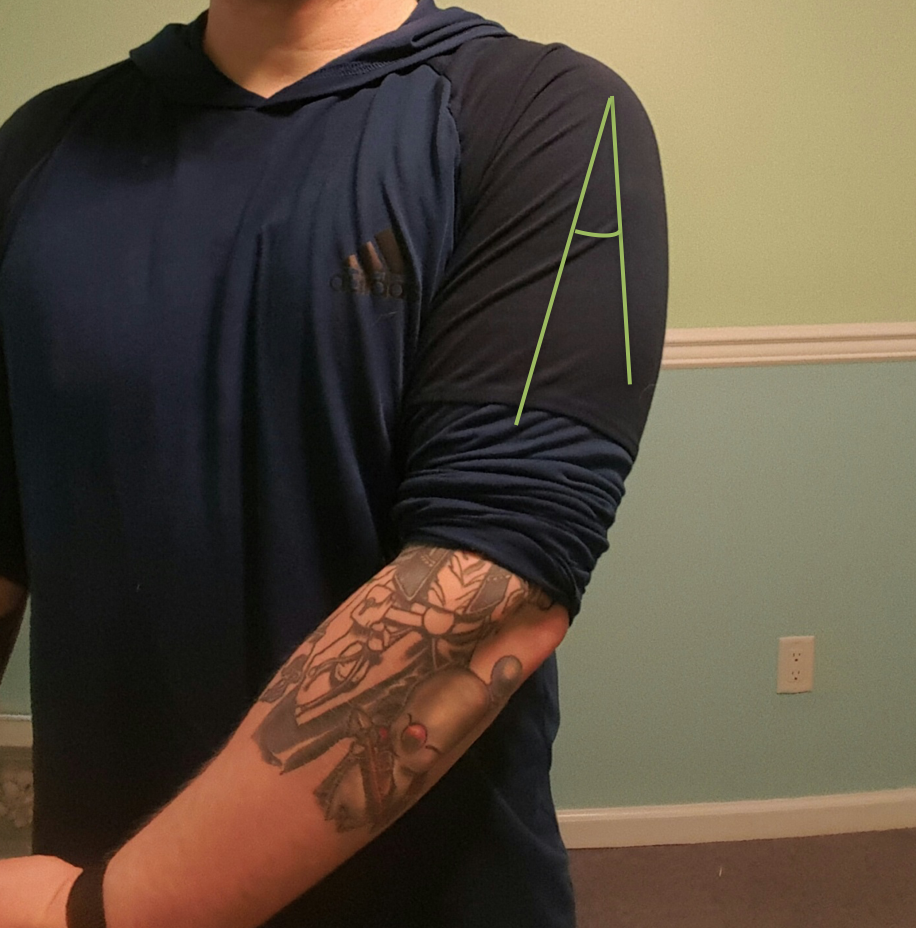
5. Lateral (external) rotation 0-90
Agonists: Posterior Deltoid, Infraspinatus, Teres Minor.
Antagonists: Latissimus Dorsi, Teres Major, Subscapularis, Anterior Deltoid.

6. Medial (internal) rotation 0-90
Agonists: Latissimus Dorsi, Teres Major, Subscapularis, Anterior Deltoid.
Antagonists: Posterior Deltoid, Infraspinatus, Teres Minor.

Elbow
1. Flexion 0-160
Agonists: Brachialis, Biceps, Brachioradialis.
Antagonists: Triceps, Anconeus.

2. Extension 0
Agonists: Triceps, Anconeus.
Antagonists: Brachialis, Biceps, Brachioradialis.

3. Pronation 0-90
Agonists: Brachioradialis, Pronator Teres, Pronator Quadratus.
Antagonists: Biceps, Supinator, Brachioradialis.

4. Supination 0-90
Agonists: Biceps, Supinator, Brachioradialis.
Antagonists: Brachioradialis, Pronator Teres, Pronator Quadratus.

Wrist
1. Flexion 0-90
Agonists: Wrist flexor group.
Antagonists: Wrist extensor group.

2. Extension 0-70
Agonists: Wrist extensor group.
Antagonists: Wrist flexor group.

3. Adduction 0-65
Agonists: Extensor Carpi Ulnaris, Flexor Carpi Ulnaris.
Antagonists: Extensor Carpi Radialis Longus, Flexor Carpi Radialis, Abductor Pollicis Longus.
4. Abduction 0-25
Agonists: Extensor Carpi Radialis Longus, Flexor Carpi Radialis, Abductor Pollicis Longus.
Antagonists: : Extensor Carpi Ulnaris, Flexor Carpi Ulnaris.
Neck and Spine
Neck
1. Flexion 0-90
Agonists: Sternocleidomastoid, Scalenes, Longus Capitis, Longus Colli.
Antagonists: Upper Trapezius, Levator Scapula, Splenius Capitis, Splenius Cervicis.

2. Extension 0-55
Agonists: Sternocleidomastoid, scalenes, longus capitis, longus colli.
Antagonists: Upper Trapezius, Levator Scapula, Splenius Capitis, Splenius Cervicis.

3. Rotation (right and left) 70
Agonists: Upper Trapezius, Scalenes, Levator Scapula.
Antagonists: Contralateral Upper Trapezius, Scalenes, Levator Scapula.

4. Lateral flexion 35
Agonists: Sternocleidomastoid Upper Trapezius, Scalenes, Levator Scapula.
Antagonists: Contralateral Sternocleidomastoid Upper Trapezius, Scalenes, Levator Scapula.

Spine
1. Flexion 75
Agonists: Rectus Abdominus, Internal And External Obliques, Quadratus Lumborum.
Antagonists: Spinalis, Iliocostalis, Longissimus

2. Extension 30
Agonists: Spinalis, Iliocostalis, Longissimus
Antagonists: Rectus Abdominus, Internal And External Obliques, Quadratus Lumborum.

References:
- “Physical Activity for Arthritis.” Centers for Disease Control and Prevention. Centers for Disease Control and Prevention, 18 Apr. 2017. Web. 25 Apr. 2017, from
https://www.cdc.gov/arthritis/basics/physical-activity-overview.html - “Normal Ranges of Joint Motion.” STRETCHING AND FLEXIBILITY – Normal Ranges of Joint Motion. N.p., n.d. Web. 25 Apr. 2017, from
http://web.mit.edu/tkd/stretch/stretching_8.html - “Joint Range of Motion Testing” (n.d.). Retrieved April 25, 2017, from
http://www.exrx.net/Testing/JointROM.html - “Impact of Range of Motion During Ecologically Valid Resistance Training Protocols on Muscle Size, Subcutaneous Fat, and Strength”, McMahon, Gerard E.1,2; Morse, Christopher I.1; Burden, Adrian1; Winwood, Keith1; Onambélé, Gladys L.1. Retrieved 26 April, 2017, from
http://journals.lww.com/nsca-jscr/Citation/2014/01000/Impact_of_Range_of_Motion_During_Ecologically.32.aspx - Fritz, Sandy . Sports & Exercise MassageComprehensive Care in Athletics, Fitness, & Rehabilitation. Elsevier Health Sciences, 2012.
- Trail Guide to the BodyA Hands-On Guide to Locating Muscles, Bones and More. 2015.
- W.Lowe, Whitney . Orthopedic MassageTheory and Technique. Elsevier Health Sciences, 2009.
- G.Salvo, Susan. Massage TherapyPrinciples and Practice. Elsevier Health Sciences, 2015.
This article/video is for educational purposes only; do not attempt without your physician’s clearance. If you are in pain or injured, see your physician
Copyright © Vidal Sports LLC 2018




